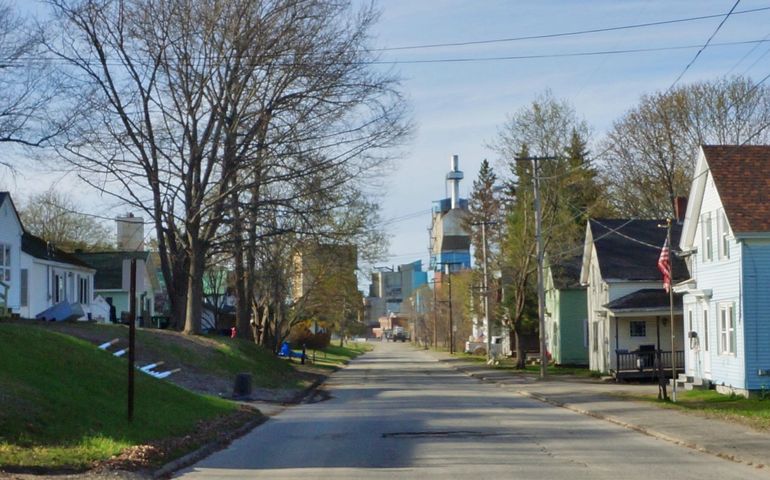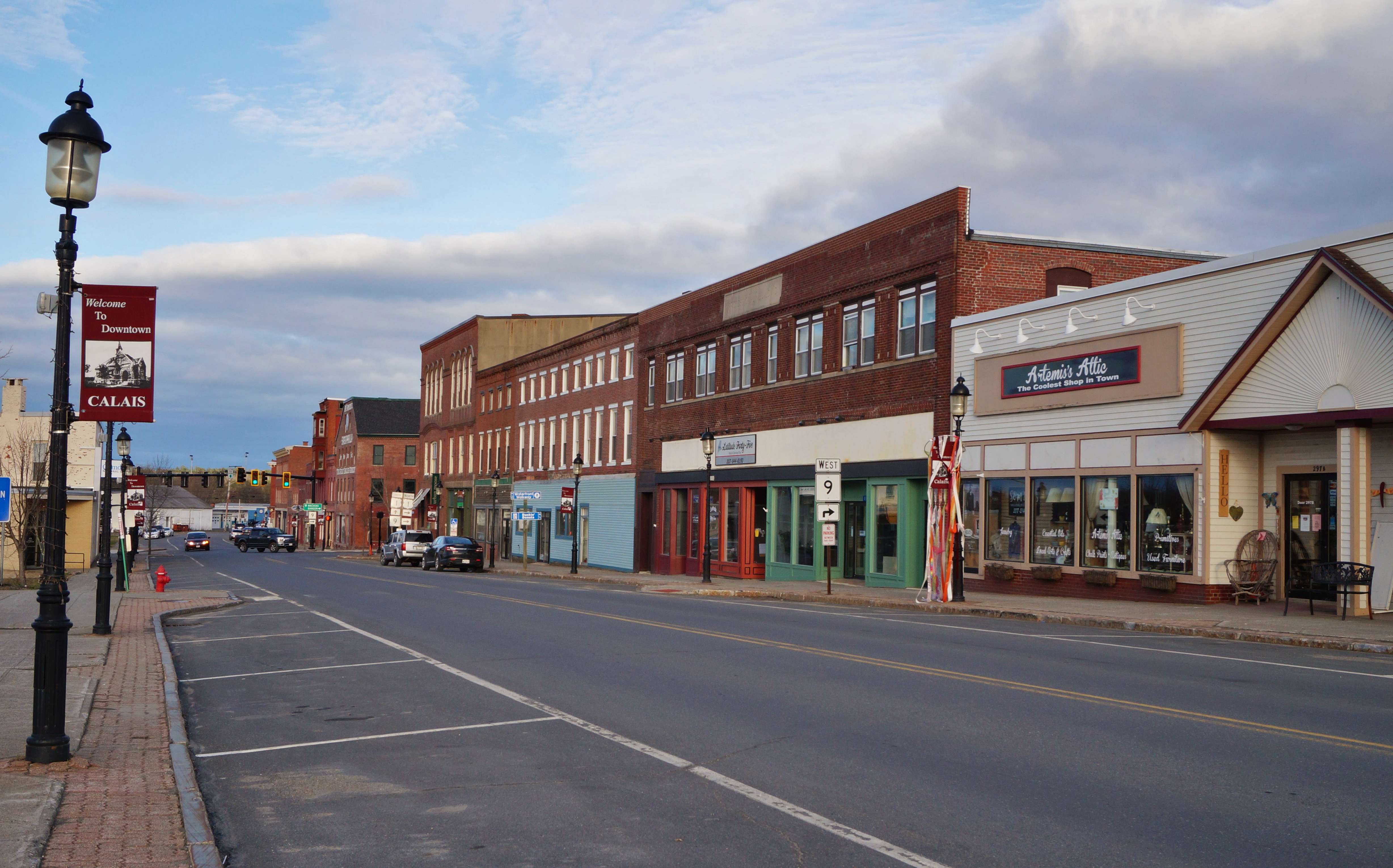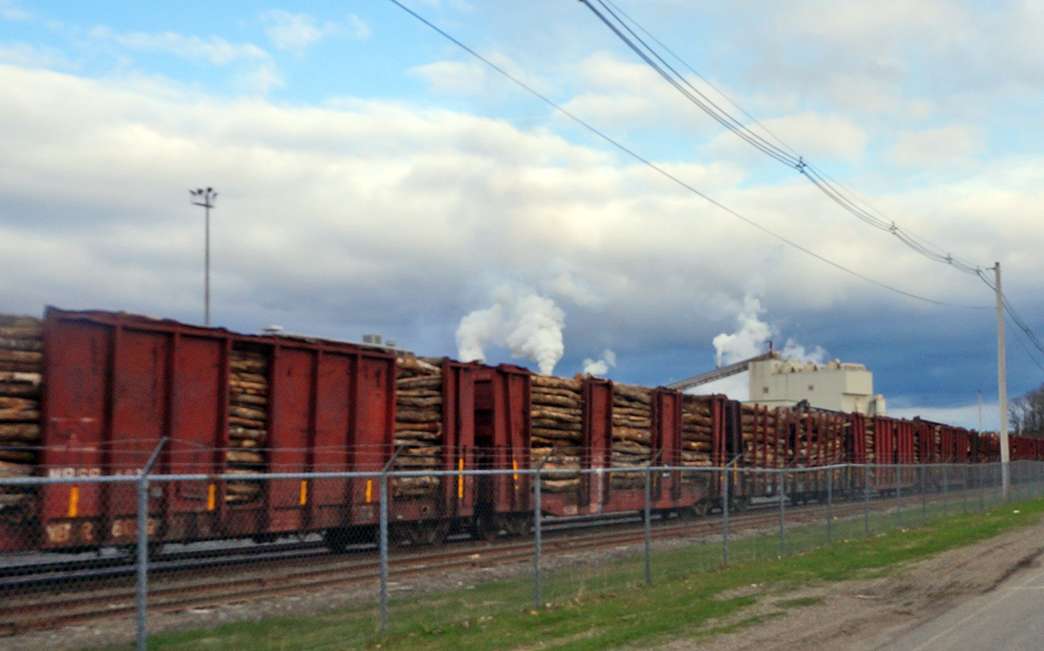
Lincoln, Calais, Baileyville jumping on Opportunity Zones to ignite development
 Photo / Maureen Milliken
The closed Lincoln Paper and Tissue Mill looms over the town. Lincoln, in an Opportunity Zone, is looking at creative ways to leverage the tax benefit program for economic development.
Photo / Maureen Milliken
The closed Lincoln Paper and Tissue Mill looms over the town. Lincoln, in an Opportunity Zone, is looking at creative ways to leverage the tax benefit program for economic development.
A year after nearly 9,000 Opportunity Zones were established in the U.S., three municipalities with zones are taking advantage of the tax law with a community-based approach designed to leverage development both in and outside of their zone.
Lincoln, Calais and Baileyville have set up "mega funds" that are not tied to one development, but organized by the municipality. The funds, managed by Acadia Capital Management II, are designed to leverage both the original intent of the zones and new rules that came out last month.
"The whole premise [of the tax law] was getting money to go into the community and circulate," said Brien Walton, chairman and CEO of Acadia Capital Management. He said it makes more sense to have one big fund in a zone rather than tying a fund to a development.
The Opportunity Zone program allows 20% of capital gains — the amount that would normally be taxed — to be invested in designated zones within six months of when it's liquidated. The money must stay in the zone for at least five years to realize tax savings. If the investment is in the zone for a full 10 years, the taxes on the initial capital gain are zero.
As head of Acadia Capital Management, Walton leads a consortium of community development entities, and works closely with local, regional and state government officials and economic development districts.
"We have a pipeline of more than 60 prospective projects that are looking to locate in Maine, so the challenge for towns like Lincoln, Calais and Baileyville is not finding companies to relocate there," said Walton, who is also director of Husson University's Center for Family Business. The challenge is raising and deploying capital fast enough to meet the six-month deadline.
Acadia Capital Management works with stakeholders to coordinate the timing of capital asset sale, financial resource packaging and deployment of investments, then also tracks those investments for the fund — acting as a matchmaker between the investors and development projects.
He said the tax inventive program has investors, the majority of them large corporations, chomping at the bit to invest, adding that Maine should take advantage. Federal estimates are $700 million in investment capital is available per zone in the U.S.
"Let"s get to it before the other states do," he said. "The investors can invest anywhere; let's get them to do it here."

Lincoln was the first
Jay Hardy had just started as Lincoln's economic development director last year when the northern Penobscot County's town's zone was designated.
He was already well-versed in the town's structure for development, including the closed mill site where Lincoln Pulp and Paper operated until 2015, but they needed the tools, particularly financial ones.
In talking to Walton about how the Opportunity Zone program worked, he realized it was just like a tool for syndicating real estate deals.
Walton, who does extensive work with the New Markets Tax Credit program, was already looking at ways to leverage the zones. "He had the background, so we said, 'Let's form a fund and see what happens,'" Hardy said.
Both Hardy and Walton said that the Opportunity Zone program, coupled with tax increment financing districts and the New Markets Tax Credit, is a powerful tool to lure investors.
Lincoln has three major goals for its fund. The primary one is to create a Maine Forest Products Innovation Park at the former mill site, where the buildings still stand. The town has an option to acquire the site and already owns 80 acres that it got in the bankruptcy proceedings in lieu of taxes owed.
He said the town is looking for next-generation forest products businesses, like biomass, particularly firms focused on biodegradable packaging, mass timber and more. Its location in the heart of the thick woods of northern Penobscot County, home to some of the state's biggest timber operations and just three miles from Interstate 95, makes it ideal.
The innovation park would be on the former mill site. The 80 acres the town owns is "greenfield" that doesn't need a cleanup. Development there, coupled with the mill site's tax increment financing district, would pay for the massive mill cleanup project.
"Someone invests, we clean up the site, we get our first investor, here comes the second one, here comes the third one," Hardy said.
He said the town will also focus on destination development tied to the natural beauty of the area, which includes 13 lakes, the Penobscot River and nearby Baxter State Park and Katahdin Woods and Waters National Monument.
The third focus is renewable energy, which would be a major way to lower the cost to do business in the region.

Calais and Baileyville, neighbors and opposites
Calais and Baileyville, both in Washington County on the St. Croix River, have since formed funds similar to Lincoln's, also administered by Acadia Capital Management.
Calais, with a population of around 3,000, is focused on finding innovation and manufacturing businesses to replace the active commerce sector the city once had. The city, which has one of Maine's eastern border crossings to Canada, has developed an industrial park and revitalized its 19th century downtown, but needs industry to bolster its economy.
"There isn't a lot of business and industry there," Walton said. When the city was designated an Opportunity Zone, "they weren't sure what to do with it."
The city, the third smallest in Maine after Hallowell and Eastport, is focusing on its natural resources, including the scenic and powerful St. Croix River and the fact it's surrounded by Maine's forestland.
Baileyville, just north of Calais on U.S. Route 1, is at the other end of the spectrum.
The town of 1,500 is home to Woodland Pulp LLC, which makes St. Croix Tissue and employs about 320 production workers.
Future Opportunity Zone rules, expected in 2020, may have more criteria for how zones are monitored. One of those is expected to be a stricter eye on job creation, which Baileyville and its mill are well-positioned for, Walton said.
Walton said the mill wants to leverage its Opportunity Zone to expand, adding jobs. He said that investment would lead to "little side projects," with money from the fund.
Walton said that James Oliver, the controller for Woodland Pulp and St. Croix Tissue, has a "vision for the region" that "makes that paper mill stand out as one of the best neighbors that a town can have."
Acadia Capital Management has been charged with ensuring "the entire community benefits — not just the mill site, or downtown, but surrounding neighborhoods as well, so that everyone can thrive."

Helping non-zone neighbors
That vision is part of a little-discussed facet of the zones — a percentage of the money can be used outside the zone.
Originally, 90% of investments must be within the zone, leaving 10% to invest elsewhere. The amount that can be invested elsewhere is growing as new rules are released and may approach 30%, Walton predicted.
The three community funds are looking for ways the "extra money" can bring development to nearby communities outside the zone, particularly tribal land.
"We have a population of 5,000, but we serve 25,000 people in the region," Hardy said of Lincoln. "We want to help strengthen our entire region."
Walton said the towns are looking to collaborate with Maine's tribal communities. Aside from part of the Micmac land in Limestone, tribes were excluded from Maine's zones.
While tribal land is held in trust by the U.S. Department of the Interior, federal logistics involved "are not onerous and actually encourage mutually beneficial collaboration between the tribe and the broader community," Walton said.
"I have had multiple conversations with the Passamaquoddy, Maliseet and Penobscot tribes about ways to support growth in their communities and have found the tribes to be passionate about caring for Maine's environment and also sharing their unique financial resources with the broader Maine community," he said.
Darrin Coffin, CEO of Indian Township Enterprises, said that kind of collaboration would mesh will with the Passamaquoddy business entity's focus on development.
Most federal and state taxes don't apply to the land held in federal trust or to tribal businesses on that land, and there are tax incentives to creating jobs that employ members of tribes.There are also benefits to working with tribes on non-tribal land.
"Our biggest challenge is access to capital," Coffin said.
He said the focus of Indian Township Enterprises is create jobs and help the Passamquoddy nation become self-sustaining, rather than relying on the federal government. The Opportunity Zones are a chance to make that happen, particularly when that investment is combined with the federal tax breaks the tribes get, said Coffin, who worked for real estate development firms in New Hampshire and Massachusetts before returning to Indian Township, which is north of Baileyville in Washington County.
Coffin said Indian Township Enterprises has already had discussions with Lincoln. "We have a few things in the pipeline," he said. "A lot of them dealing with the forest industry." Many tribal loggers lost work as a result of Lincoln's mill closing.
Other industries being explored are biomass, including natural bio-carbon, used to treat soil and as an energy source, renewable energy, particularly wind and solar; and cross laminated timber. There's also the possibility of acquiring land within the Lincoln zone, and certain uses would make it part of the federal trust land, upping the tax advantages within the zone.
"We're looking to be a good partner," he said. "You have to be involved with the macro to get to the micro."

'These guys are taking a chance'
Another little-discussed aspect of the rules that came out in April is that an investor can pull money out of one project in a zone and put it into another project without penalty. Before that change, there was no provision for that.
Walton said that aspect works well with municipal zones, where the investment isn't necessarily tied to one project.
Walton said the most important thing is that a municipality in a zone be welcoming to businesses.
"If investors or a business can go anyplace in Maine, you want to show them you welcome them," he said. Lincoln, for instance, "Is all about business."
Hardy said the town is looking at innovative companies, "and you find innovative companies if you're innovative."
"Innovators are early adopters," he said. "They'll look at us and say 'these guys are taking a chance. They're early adopters, too.'"










0 Comments